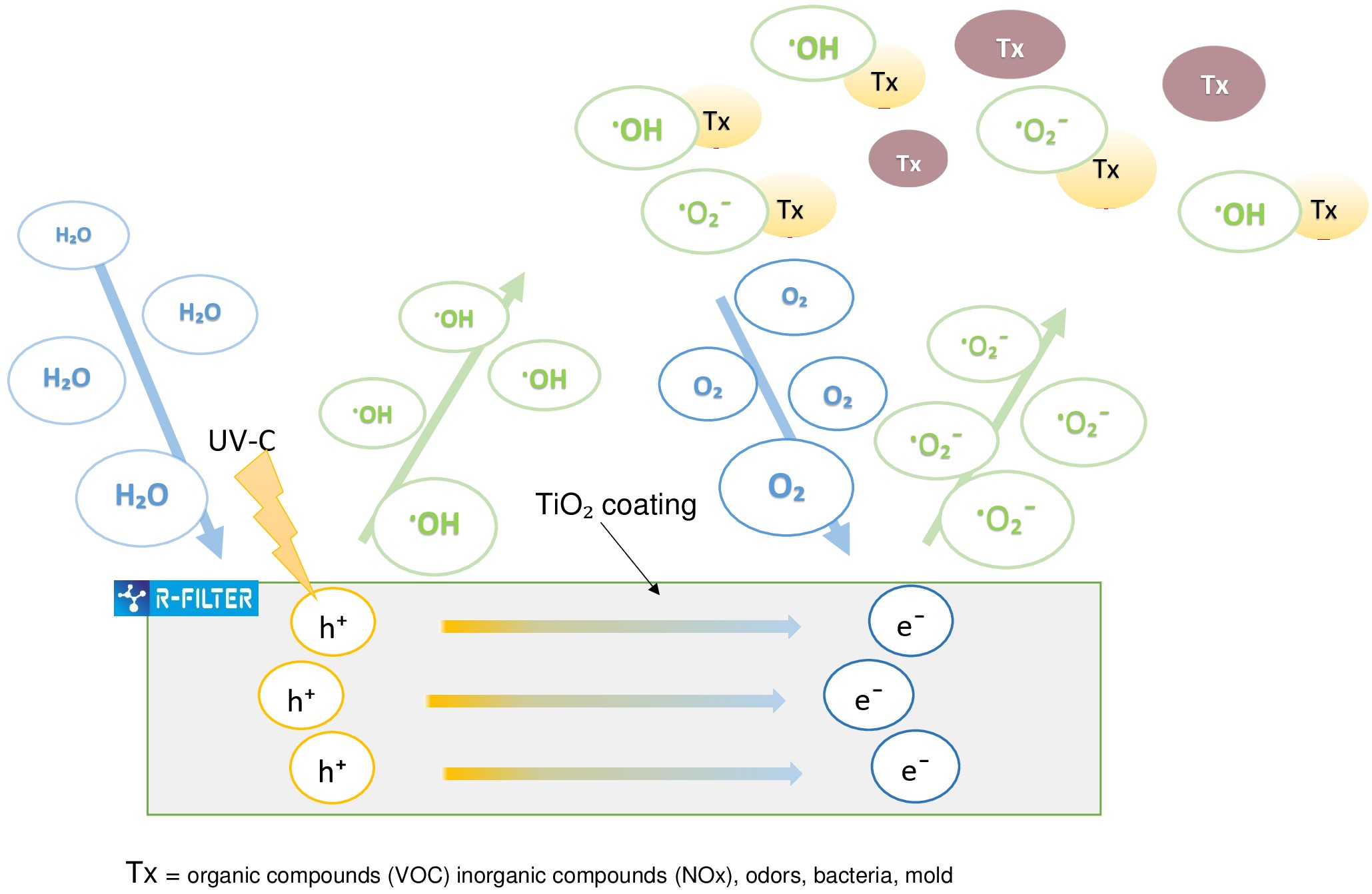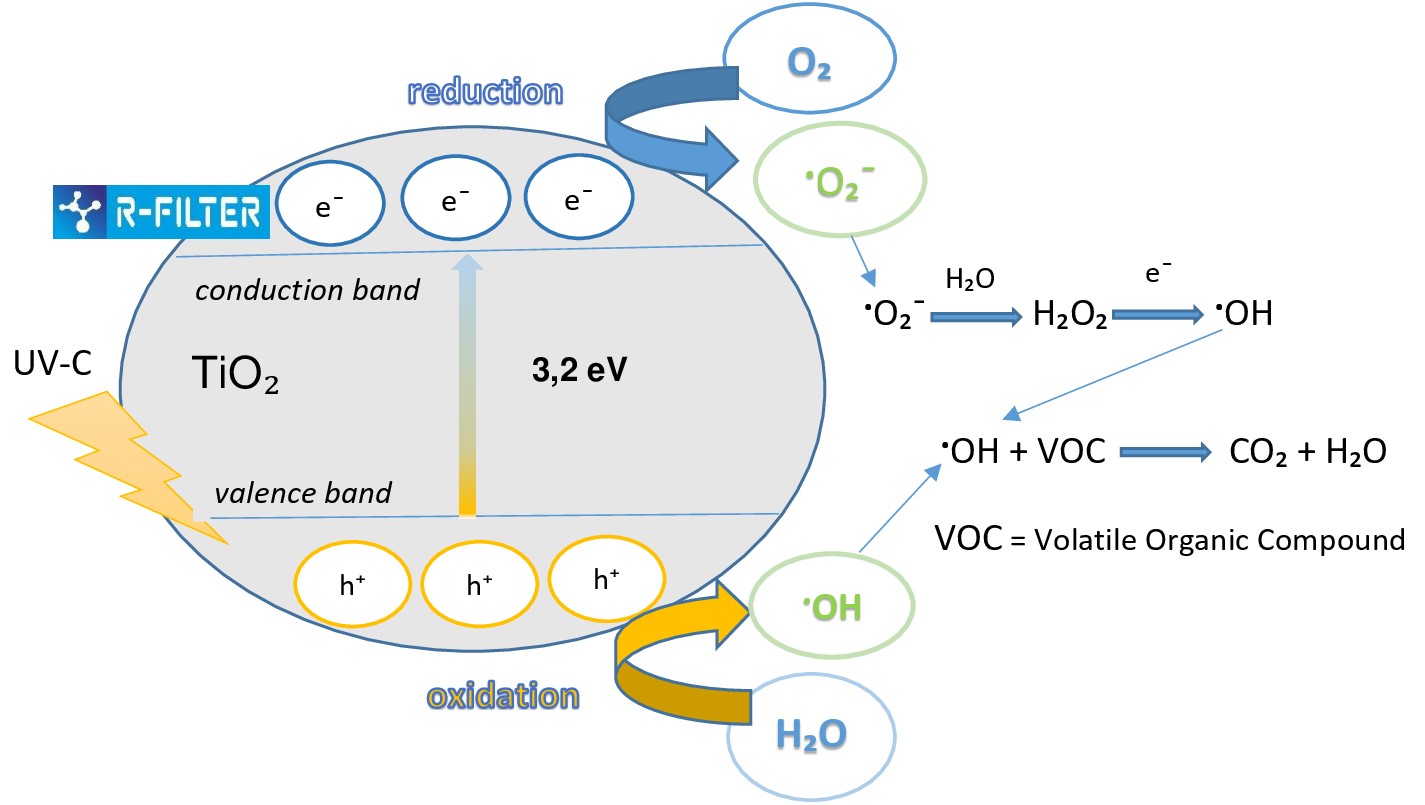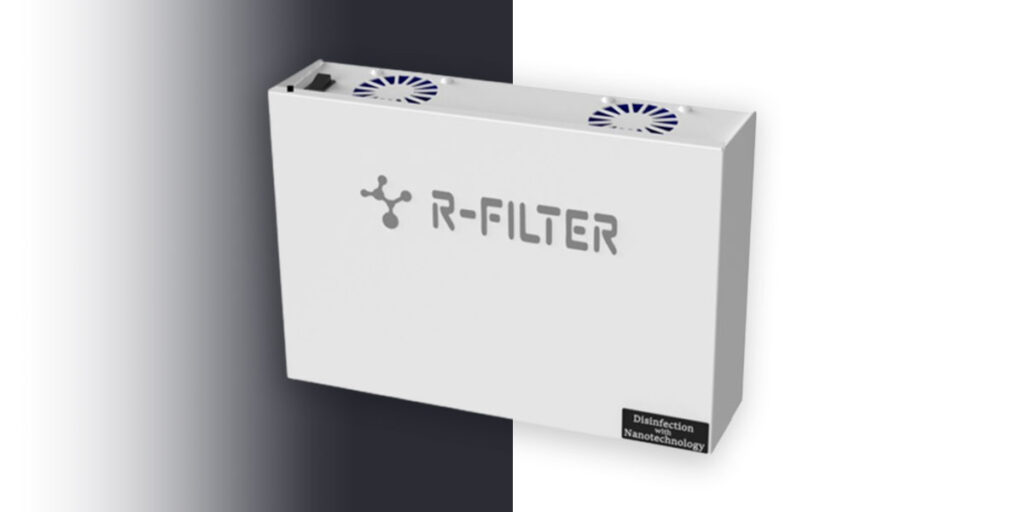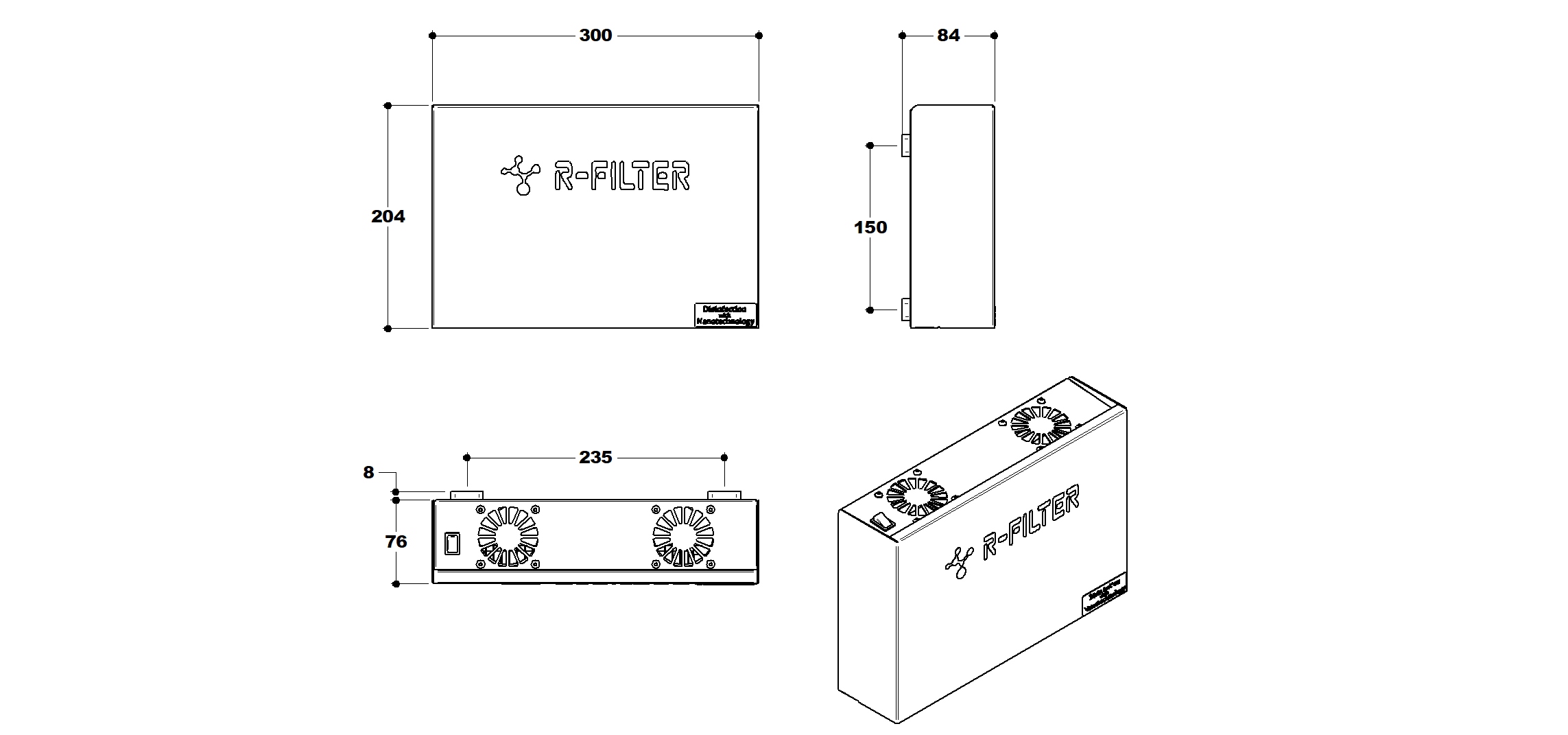UVH 50E
The UVH 50E photocatalyst air purifier is designed for the disinfection and odor control of air in heavily used public areas.
The innovative, compact device can be used in all rooms (washbasins, bathrooms, offices, accommodation) where we want to dispose of microorganisms, unpleasant smells and odors that are harmful to human health. By removing the bacteria and viruses from the air, we also prevent them from settling on surfaces and being spread by touching them.
Functional principle
In the air purifying device, there is a synergistic effect of two technologies.
PCO (PhotoCatalytic Oxidation):
The indoor air circulated by the built-in fans flows through the device in contact with the photocatalyst plates. The plates are excited by UV light, whereupon the catalyst surfaces are activated and produce highly reactive hydroxyl radicals and superoxide ions on their surfaces. The resulting radicals attack the air pollutants like most organic pollutants (bacteria, viruses, mold and odors) and destroy them through oxidation.
UVGI (Ultraviolet Germicidal Irradiation)
The applied germicidal lamp is a special UV-C light source. The short-wavelength ultraviolet light in the UV-reactor chamber kill or inactivate microorganisms by disrupting their DNA and RNA. The applied UV light is used also to activate the photocatalyst.
The following air purification process takes place on the surface coated with TiO2:

The above coating is a semiconductor and when light of a certain wavelength strikes the surface of the titanium dioxide, electrons (e–) are transferred from the valence band to the conduction band. At the same time, electron holes (h+) are formed in the valence band. The holes oxidize strongly, while the electrons have a strong reducing effect. From the water arise highly reactive hydroxyl radicals (·OH) and from the atmospheric oxygen reactive superoxide radicals (·O2ˉ). As a result, the pollutants are decomposed. The ultraviolet rays change the DNA structure of microorganisms and cause their destruction. Microbes and organics will be mineralized to water and carbon dioxide which is removed with the purified air. The TiO2 coating does not wear out and remains permanently functional.
In a "cross-sectional" picture, the decomposition process of volatile organic compounds (VOCs):


Features, benefits:
- Synergistic effect of dual process (UVGI and PCO)
- Outstanding disisfecting and deodorizing effect
- Chemical- and ozone-free
- Compact size
- Wall-mounted or table-top design
- Minimal maintenance effort

On request, we will send you device data sheets after registration under the menu item "Contact".